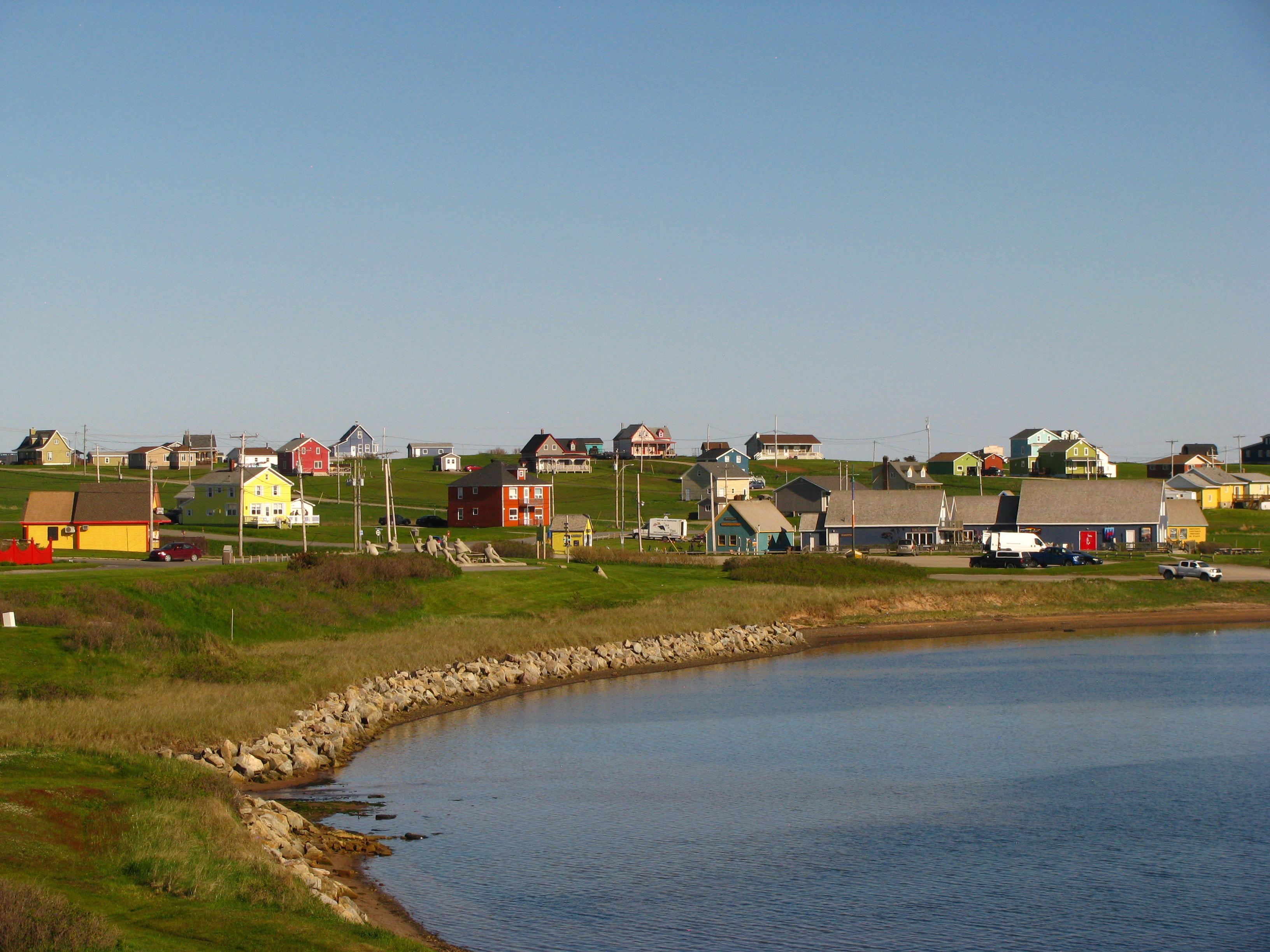
Wind-swept, remote, and jaw-droppingly beautiful. These are Quebec’s Îles-de-la-Madeleine. A narrow archipelago, surrounded on all sides by the unpredictable waters of the Gulf of St Lawrence, the islands are home to just under 13,000 souls who live mainly from fishing and tourism.
Like many small islands around the globe, the consequences of climate change are altering life here dramatically. Islanders are coming together to grapple with this reality and find local solutions, and are asking hard questions about the future.
We say that humans can adapt. Sure, but at what cost?
“Will it be possible to maintain communities like ours in such vulnerable areas in the context of climate change?” asks Serge Bourgeois, director of the islands’ planning department. “We say that humans can adapt. Sure, but at what cost?”
In November 2018, the Îles-de-la-Madeleine experienced a severe winter storm. Over 1500 residents were left without electricity, communications were completely cut off, and residents were forced to boil water.
A few decades ago, a storm like this would have been rare. But thanks to climate change, winter storms are both more intense and more common these days.
Understanding the magnitude
“When it comes to climate change, the Îles-de-la-Madeleine are really Quebec’s sentinel,” says Laurent Da Silva, an economist with Quebec’s climate change consortium, Ouranos. “The erosion rates we’re seeing [on the islands] are faster than anywhere else in Quebec.”
Da Silva was part of a multi-year study with Ouranos and the Université du Québec à Rimouski uncovering the economic impacts of climate change-related erosion on the province’s coasts. What they found was staggering: $1.5 billion of impacts to infrastructure over the next fifty years.
And that’s just the direct effects of erosion on infrastructure. The study didn’t include indirect impacts to public health and local economic activities, or the effects of other threats like sea water inundation. The costs associated with submersion due to storms, flooding and sea-level rise are expected to be two to four times as high as those of erosion.

What makes these islands so vulnerable?
“In the Îles-de-la-Madeleine, we sometimes joke by saying that we can’t always back off a cliff, because we’ll fall off the other side,” says Bourgeois. The long, thin islands are structurally fragile, composed of rocky outcrops connected by dunes and sand spits. The landscape is naturally sinking, and is susceptible to erosion and shifting dunes. But climate change is making all of these effects much worse.
During the winter, ice used to surround the islands, creating protection from the heavy winds and strong waves that cause erosion. Now, ice sometimes doesn’t form until February or March, and melts sooner than it used to. This lack of protection worsens the effect of storms like the one in November 2018. In effect, the islands are now being constantly pummeled by the sea.
To make matters worse, global warming has brought rapid swings in temperature. When the weather flip-flops between freezing and thawing, water infiltrates cracks on the islands’ cliffs and then suddenly freezes and expands. The pressure causes the cliffs to fall apart, exacerbating erosion.
Add sea-level rise to the mix, which is also threatening the groundwater and drinking water supply, and it’s clear that islanders have a lot on their hands. Vital infrastructure, services, and even private residences are at risk. Many of the roads that connect the islands are susceptible to flooding and erosion, and some locals foresee that a return to boat transportation might eventually be necessary.
A changing way of life?
Warming waters and melting ice are also changing the habitat of local species like molluscs, lobsters, seals, and groundfish. These impacts are starting to affect people's livelihoods, with essential fishing, hunting, and aquaculture industries at stake. The Îles-de-la-Madeleine have the largest fleet of lobster fishers in Quebec, and 70% of the province’s shellfish production is done here.
“Fisherman rely a lot on water temperature,” says Bruno-Pierre Bourque, a young fisherman who has been fishing for the past decade. “Yes, there’s going to be changes. But will they all be negative? There’s positive and negative in every situation. We’ll have to adapt, maybe change fishing sectors.”
For now, fisheries are doing well. Some fishermen are taking advantage of a boom in lobster populations, with record catches in 2017 and 2018. But as species migrate northward to cooler water, many locals are concerned about the future of local biodiversity, and what that means for the local economy and culture.
“We’re a fundamentally maritime people,” says Bourgeois. Indeed, for hundreds of years, Miꞌkmaq peoples had used the islands for fishing and seal hunting. The islands were later settled for fishing by French colonists in the 18th century, and the community’s dependence on the sea has continued ever since. “When fishing isn’t doing well, that has a significant impact on the community.”
Stepping up to the challenge
Residents are acutely aware of these issues, and many are tackling them head on.
“We know the problems we’re facing, and we know what the stakes are. And time is short,” says Bourgeois. “We have priorities, we have work scheduled, and we’re ready to take action.”
Six years ago, over 60 local partners came together to do environmental strategic planning for the area. “Climate change came out as the number one issue on an environmental, social and economic level,” says Marie-Eve Giroux, executive director of the local environmental organization Attention Fragiles.
Locals created a permanent committee to deal with erosion, and have discovered that in many cases the best strategy is to move inland. Pedestrian trails and observation points are being relocated. New regulations and zoning have been put in place to protect soil stability and prohibit construction in at-risk areas.
Residents have also learned from prior mistakes what not to do - such as relying on hard infrastructure like seawalls or riprap. “The traditional rock walls we’ve built in front of our infrastructure worsen the problem rather than improve these situations,” says Bourgeois.
“It’s rare that hard engineering measures are the solution,” says Da Silva. “First, they’re extremely costly to put in place. Second, they’re not adaptable to the uncertainty of climate change.”
Instead, some local groups have been emphasizing ecological approaches, such as dune restoration and nourishing the island’s beaches. Attention Fragiles has been working on dune restoration for over 20 years, using “soft” techniques to maintain the sand with natural materials and plants. These strategies also protect the groundwater aquifers responsible for drinking water.
“There are around 300 locations that we keep track of, and we try to involve citizens in those projects,” says Giroux. “It’s really the beach grass that maintains the dunes. There’s a whole network of roots which can spread for kilometres and which keeps the dunes together.”
Facing change
But not all risks can be adequately addressed with cheap and soft solutions. “Often when we talk about solutions, we’re talking about millions of dollars,” admits Bourgeois. “Will we have the financial means to maintain populations in areas that are so vulnerable? That’s the big question for me. If the higher tier government doesn’t help communities, there will be big problems.”
The Province of Quebec has been monitoring these issues, and has set aside $45 million over three years for adaptation to climate change-related erosion. But Bourgeois does not mince words: “In this context, it’s nothing.”
The lack of financial resources means that locals are beginning to make difficult choices. Like many, Bourgeois is pragmatic about the situation: “We can’t move everything, and we can’t sacrifice everything. We have to fight in the areas where the fight is necessary.”
For now, key regions have been prioritized for action, including Cap-aux-Meules, which has 60% of local services, and the historic site of La Grave, a flagship tourist site which is located on a particularly narrow and vulnerable piece of land. Since tourism accounts for 50 million dollars of economic impact per year, it’s a vital aspect of land-use planning.

When it comes to local residences, some individuals and families are moving their assets inland, to safer locations. “There are people who [have houses] on the edge of a cliff today who know that they have 15 years left, 20 years, perhaps less,” remarks Bourgeois.
“Often, the best solution is managed retreat,” notes Da Silva. “At the end of the day, the sea is always going to win.”
Read More: What is “managed retreat”?
As climate change progresses, many coastal communities are facing the reality that living next to the sea is not as viable as it once was. The threats from flooding and erosion can get too high, especially if lives are at stake.
“Managed retreat” is exactly what it sounds like - strategically allowing areas to be flooded by the sea, and facilitating relocation of people to safer locations. When possible, this also means moving vulnerable assets, such as houses or other infrastructure.
On the Îles-de-la-Madeleine, it hasn’t been easy to convince people to move away from the coast. People have long valued access to the sea and the incredible views. But the municipality and other policymakers have started to draw a hard line to deter construction in vulnerable areas.
“Without knowing, people put themselves in a precarious situation and later, when we have disasters, it’s the government that is stuck paying the bills,” says Bourgeois.
In some situations, it makes much more sense to manage a retreat from vulnerable coasts. Lives are less at risk, and governments spend less money responding to disasters. But homeowners also need to be supported so that they’re financially able to retreat.
As Bourgeois puts it, “in a lot of cases, the solution has already been identified as giving money to people so that they can move their investment to safety.”
This can be done through initiatives such as home buyout programs or relocation assistance. Îles-de-la-Madeleine residents with homes in at-risk locations are currently eligible for some relocation assistance from the Quebec government, but must still foot part of the bill themselves.
Finding hope and opportunity
For some locals, the challenge of climate change has prompted a fundamental rethink about how to live life on the island. That’s the case for the applied research organization CERMIM (Centre de recherche sur les milieux insulaires et maritimes), whose mandate is to focus on innovation in maritime and island environments.
“Islands have such an extraordinary context when you think of the constraints we have, whether it’s erosion, climate change, waste management, energy sources…” says Mayka Thibodeau of CERMIM. “It’s like a planet on a smaller scale.”
In the community, there’s a spirit of innovation, of creativity, of finding ways to do things together.
CERMIM is actively involved with adaptation initiatives on the island, but they’re also thinking of ways to reduce environmental impacts. Part of that means recognizing the role that residents can play in reducing the fossil fuel emissions that cause climate change in the first place.
“We’re 100% dependent on fossil fuels. All transportation on the island, and all energy use for the time being come from hydrocarbons,” says Thibodeau. Although Hydro-Québec is planning to install a 200-kilometre cable to connect the islands to mainland hydroelectric power, residents will mostly rely on the existing diesel power plant until at least 2025.
To cut emissions, Thibodeau has helped get a social enterprise off the ground called the Materiauthèque. The goal is to reduce waste by recycling and reusing construction materials, creating employment and economic benefits in the process. “I fundamentally believe that humans are capable of finding ways to better live together with our environment.”
The solutions-oriented approach of local residents has also led to other exciting initiatives. The local office of Merinov, Quebec’s primary fisheries and aquaculture research centre, is working with local producers on climate solutions. To manage impacts to local biodiversity, they’re looking at how producers might be able to work with new and different species or change their production techniques. They’re also working on improving species management to ensure sustainable practices.
Fishers, hunters and aquaculture producers are looking to the future with resolve. “Being flexible and diversified is the key to success these days,” says Bourque. “My grandfather mostly fished scallops. My father mostly fished groundfish. Me, I mostly fish crab. And my son, I hope he continues this lifestyle.”
Although the future is uncertain, islanders are confronting climate change with equal doses of pragmatism and optimism. “It’s surprising to see how much the population and citizens feel involved in their community,” says Bourgeois. “It’s probably what our strength lies in.”
“In the community, there’s a spirit of innovation, of creativity, of finding ways to do things together,” says Giroux. This resourcefulness is characteristic of many island communities - there’s a recognition that communities need to be self-reliant. On an island, “you really see the limits of your environment.”
Recommended Article Citation
Climate Atlas of Canada. (n.d.) On the Edge. Prairie Climate Centre. https://climateatlas.ca/on-the-edge









.png)


